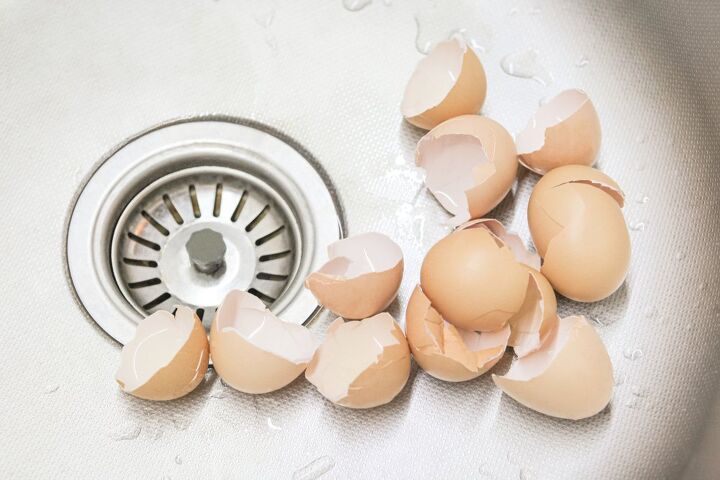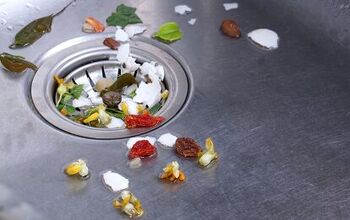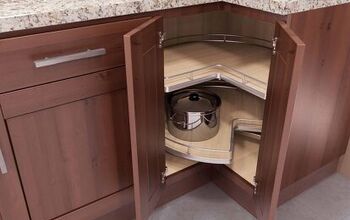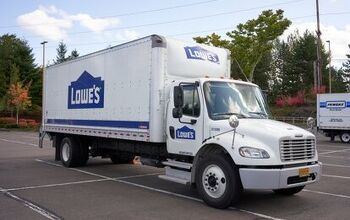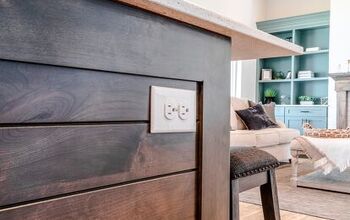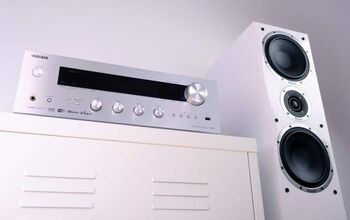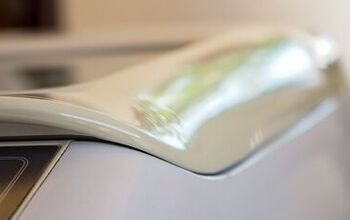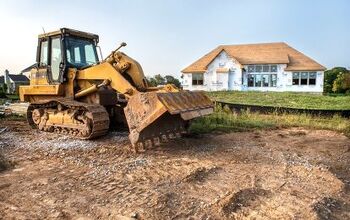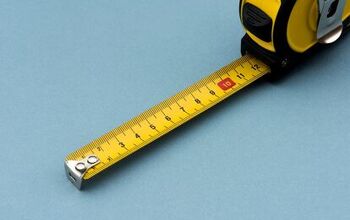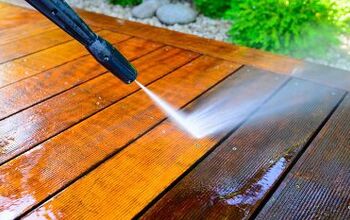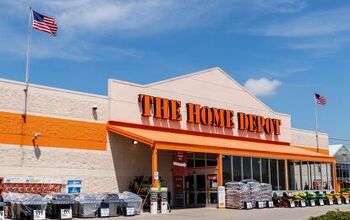What Not To Put In A Garbage Disposal With A Septic Tank

There are many homes that have a septic tank. When you have a septic tank, you may wonder if you can also have a garbage disposal in the kitchen. While some people believe otherwise, it is possible to have both.
You cannot put non-biodegradable items down a garbage disposal with a septic tank. Items include cat litter, trash, and floss. Moreover, there are food items that should not be put in either, such as potato peels, cooking oil, or shellfish. These items can damage the delicate bacteria in the septic tank. They can also damage the garbage disposal itself.
Knowing what you can and cannot put into a garbage disposal is important to avoid bad situations. Moreover, understanding how to take care of your garbage disposal will also help avoid unpleasant situations.
Do You Need Septic System Repair?
Get free, zero-commitment quotes from pro contractors near you.

Garbage Disposals and Septic Tanks
Not all homes have septic tanks, but the ones that do normally avoid having a garbage disposal. However, you do not need to worry because, despite this, most homes can have both.
In fact, any house can have a garbage disposal. Many people try to avoid them because the garbage disposal will increase the number of solids in your septic tank.
Remember, all the drains in your home, including the one hooked up to the garbage disposal, go into the septic system. It is used to grind down food solids into small shreds so that they can be washed down with water.
Why They Can Work Together
If used properly, a garbage disposal should not clog or jam the pipes leading to the septic system. While the solid content of the septic tank will increase, it should not cause you trouble.
You can have a garbage disposal and a septic tank in your house at the same time. Consider these points:
- Garbage disposals should be used for biodegradable solids.
- Septic tanks break down waste.
- Septic tanks should not have non-biodegradable solids.
Considering these facts show how a septic tank and a garbage disposal can work together. As long as the right materials are put into the garbage disposal, it should be okay for the septic tank.
However, precautions should be followed to ensure the garbage disposal is working properly.
What Not to Put in Garbage Disposal
As mentioned earlier, if something is not biodegradable then it should not be put into your garbage disposal. The septic tank at your home is a delicate system that relies on bacteria to break down what it contains. If something is not biodegradable, it can negatively affect the tank.
Therefore, it is important to know what you can and cannot put down it. The following items you should not put down your garbage disposal.
| Non-food items: | Food-related items: |
| Cat litter | Coffee beans |
| Dental floss | Eggshells |
| Plastic | Potato peels |
| Trash | Nuts |
| Diapers | Oatmeal |
| Sanitary napkins | Pits of fruits |
| Cigarettes | Shellfish |
Remember that many of the food-related items that you should not put into your garbage disposal are great for compost. They can break down a lot better there, and it will give you good fertilizer.
The key is that if it cannot break down easily then it should not be put into the garbage disposal. However, many foods can be placed into it. These foods can be broken down by the garbage disposal and therefore pose no real threat to the septic tank.
What You Can Put In Garbage Disposal
Knowing what you cannot put into the garbage disposal is as important as knowing what you can put into it.
While what you put into the garbage disposal should be biodegradable, it is good to know what things are okay.
While anything biodegradable is okay to put into the garbage disposal, remember that a garbage disposal does not liquefy solids. It breaks it down into small pieces. These are still solids. If you use them too much with a septic tank, you could potentially damage the system.
If you are selective with what you choose, i.e., choosing already soft or rotted foods, you can avoid issues. Here are some items you could put into your garbage disposal without any issues:
- Old fruits, such as bananas, oranges, or tomatoes.
- Rotten foods that have become soft.
- Unconsumed perishables.
These items should break down and be gentle on the septic tank. Remember, you do not want anything that could potentially damage the tank.
How to Keep Both Systems Running Efficiently
A septic tank is a very delicate system. Therefore, what you put into it will have a big effect on its longevity and efficiency. However, there are other things to consider when it comes to the garbage disposal itself.
You must care for the garbage disposal when you have both systems in your home. It is important because it will lead to both working efficiently. Consider some of the care that goes into maintaining a garbage disposal:
- Keeping the garbage disposal clean
- Fixing leaks and other minor repairs
- Replacing the garbage disposal when it does not function properly
Why is it important to keep the garbage disposal in good running condition? If the garbage disposal does not run properly it can harm the septic tank.
Remember, it is sending food particles into the tank. You want to make sure those food particles are properly ground so they do not clog pipes or the tank.
By taking care of the garbage disposal properly, you will ensure that it is running properly. If it ceases to run properly–for one reason or another–then it may be time to get a new unit.
Cleaning the Garbage Disposal
If you put items that are not biodegradable down the garbage disposal, you risk ruining the septic tank. You also risk ruining the garbage disposal itself. Moreover, if you put down the wrong foods or not, the garbage disposal will get dirty.
It is important that you keep the garbage disposal as clean as you can. A clean garbage disposal will run more efficiently.
When it gets dirty, grime builds up and can cause leaks, malfunctions, and poor grinding ability. It is important to monitor the cleanliness of the unit.
To maintain the cleanliness of the garbage disposal, pour a little soap down the garbage disposal after each use. You would also pour down a little water and run the disposal until the soap and water rinse everything.
When a Deep Clean is Needed
However, there are times when a little more may be needed. Perhaps you smell something coming from your garbage disposal. This can be a sign that it needs a thorough cleaning.
When the garbage disposal smells, use one-half cup of vinegar and baking soda on the inside of the unit. Using a sink stopper to keep the liquid contained, you let the solution rest and soak for about 15 minutes. Afterward, simply rinse the garbage disposal with water.
Likewise, if the pipe gets clogged, you would need a sink auger to unclog it. However, you must first disconnect the electricity to the garbage disposal before breaking up the clog.
As with the vinegar and baking soda, finish the process by rinsing the garbage disposal with water.
Replacing the Garbage Disposal
There are times, however, when a garbage disposal needs to be replaced. Sometimes it is not functioning properly due to improper use–though the age of the unit is also a factor.
If it is always leaking or the food is not being broken down, it may be time to replace it.
Luckily, this is a process you can do yourself. You may have installed the original garbage disposal, but if you did not, it can be easily done.
If you do notice something wrong with your garbage disposal, it is best to take care of it right away. Remember how delicate the septic tank is.
The longer you let a problem fester the more issues you will encounter. If you need to replace the garbage disposal, make sure to do it as soon as you can.
Precautions to Consider
It is important to keep an eye on certain best practices when you have both systems at your home. Caring for the garbage disposal will help you care for your septic tank.
Consider these precautions when caring for your garbage disposal:
- Use the garbage disposal frequently. If you do not use the garbage disposal regularly, rust and grime can build up causing damage to the unit.
- Use cold water. It is important to use cold water because it will help solidify oils that can then be ground down.
- Precut the food. It is important to cut large chunks of food down before putting it into the garbage disposal. Moreover, make sure to put them in one at a time to avoid jamming the garbage disposal.
If you follow these precautions, you should not have anything to worry about with the garbage disposal.
Do You Need Septic System Repair?
Get free, zero-commitment quotes from pro contractors near you.

Related Questions
Can bleach be used in a garbage disposal?
No, you should never use bleach with a garbage disposal. No other harsh chemicals should be used, either. These chemicals damage not only the garbage disposal, but they will damage your septic tank, too.
Why should eggshells not be put in a garbage disposal?
Eggshells should not be used in a garbage disposal. They will not be broken down by the septic tank’s bacteria. This means they can clog and damage the tank. Additionally, since they will not break down properly, they will float.
What happens when the septic tank becomes full?
When a septic tank is full, it must be emptied by a professional. This may occur more frequently when you have a garbage disposal. The reason? The garbage disposal will send more solids to the septic tank than normal.

Hannah DeMoss has been a writer for nearly a decade. Her passion for writing began years ago has continued to grow. Her expertise at home involves furniture restoration and other small DIY tasks. When not writing, Hannah enjoys the outdoors with her husband and pups, as well as traveling.
More by Hannah DeMoss



